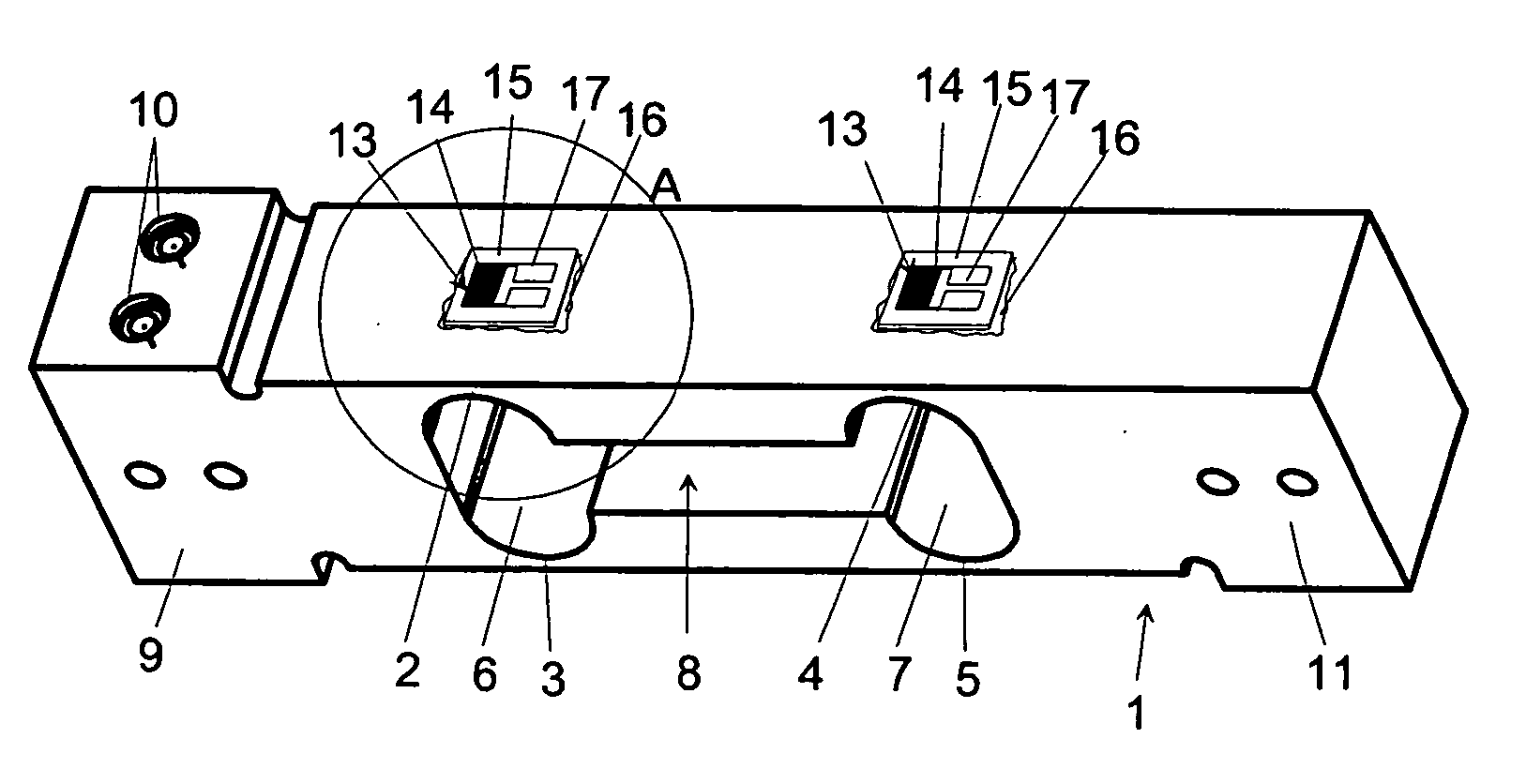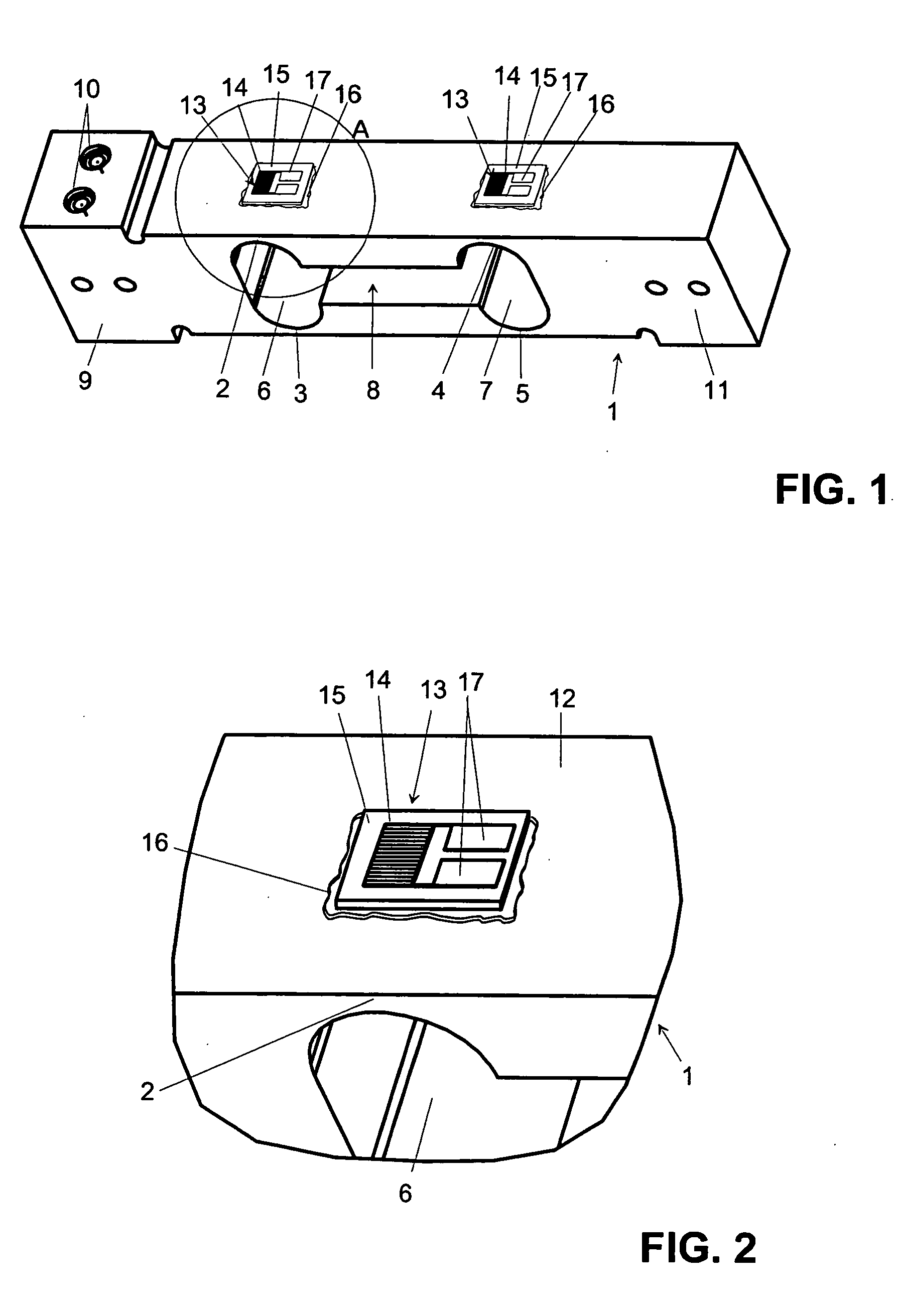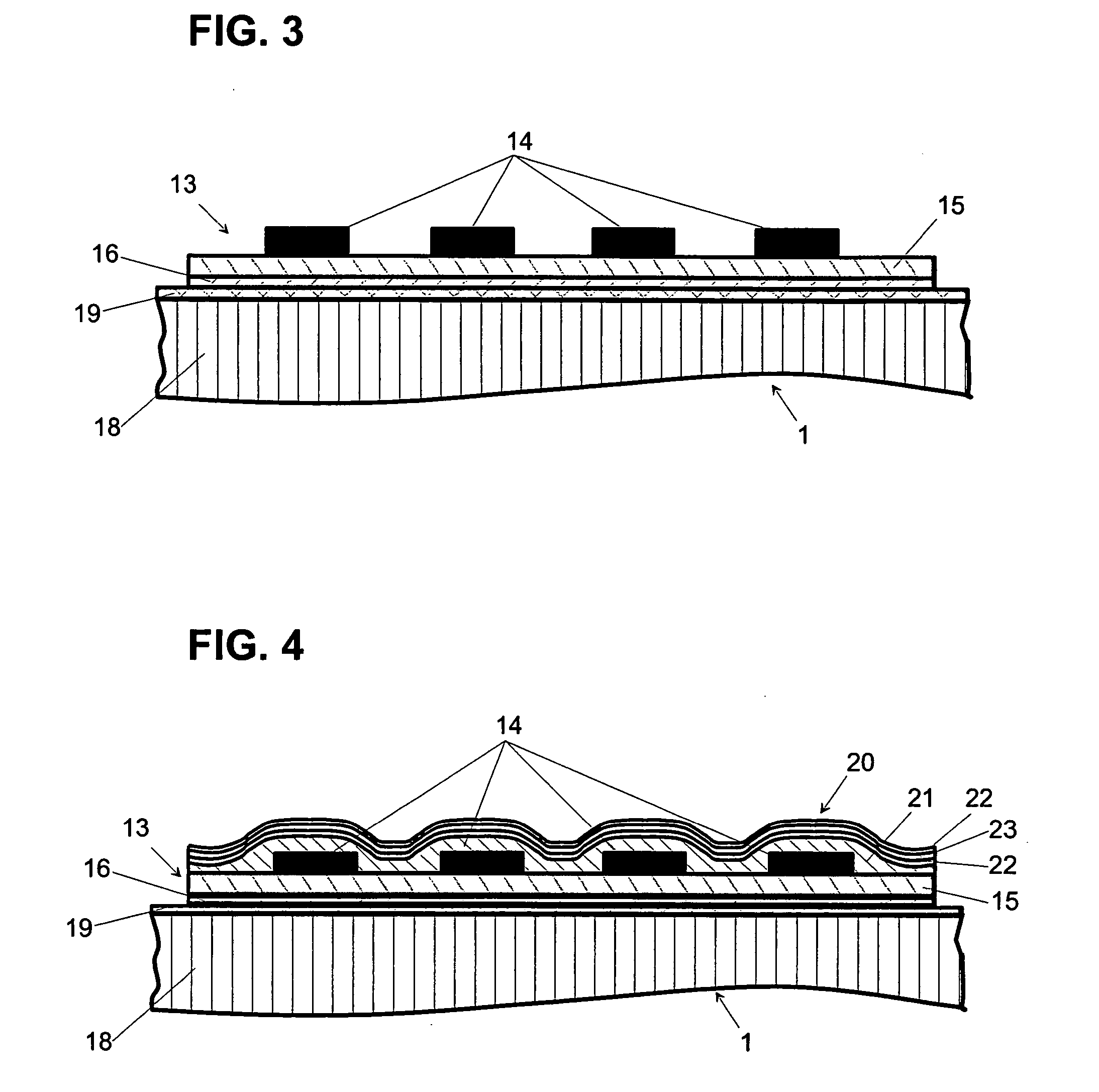Bonding of strain gauges to the deformable body of a force-measuring cell
a force-measuring cell and strain gauge technology, applied in the field of force-measuring cells, can solve the problems of so-called thermal stress building up in the installed strain gauge, and achieve the effects of reducing the number of strain gauges
- Summary
- Abstract
- Description
- Claims
- Application Information
AI Technical Summary
Benefits of technology
Problems solved by technology
Method used
Image
Examples
Embodiment Construction
[0032]FIG. 1 illustrates an exemplary deformable body 1 of a weighing cell with four elastic bending zones 2, 3, 4, 5 arranged at the corner points of a parallelogram. The bending zones 2, 3, 4, 5 are formed by the curved contours of widened end portions 6, 7 of a cutout 8 at the center of the monolithic deformable body 1. The load receiver 9 of the deformable body 1, which is shown in the left-hand part of FIG. 1, is vertically movable. If a load is put on a weighing pan, which is not shown in the drawing but can be fastened by means of several screws to the tapped holes 10 of the load receiver 9, the load receiver 9 is moved vertically downward in relation to a stationary part 11 (shown in the right-hand part of the drawing) of the deformable body 1 which is fastened directly to a housing or to an intermediate mounting bracket, as the bending zones 2, 3, 4 and 5 undergo a deformation. This deformation is measured by means of strain gauges 13 that are adhesively bonded to the top s...
PUM
 Login to View More
Login to View More Abstract
Description
Claims
Application Information
 Login to View More
Login to View More - R&D
- Intellectual Property
- Life Sciences
- Materials
- Tech Scout
- Unparalleled Data Quality
- Higher Quality Content
- 60% Fewer Hallucinations
Browse by: Latest US Patents, China's latest patents, Technical Efficacy Thesaurus, Application Domain, Technology Topic, Popular Technical Reports.
© 2025 PatSnap. All rights reserved.Legal|Privacy policy|Modern Slavery Act Transparency Statement|Sitemap|About US| Contact US: help@patsnap.com



